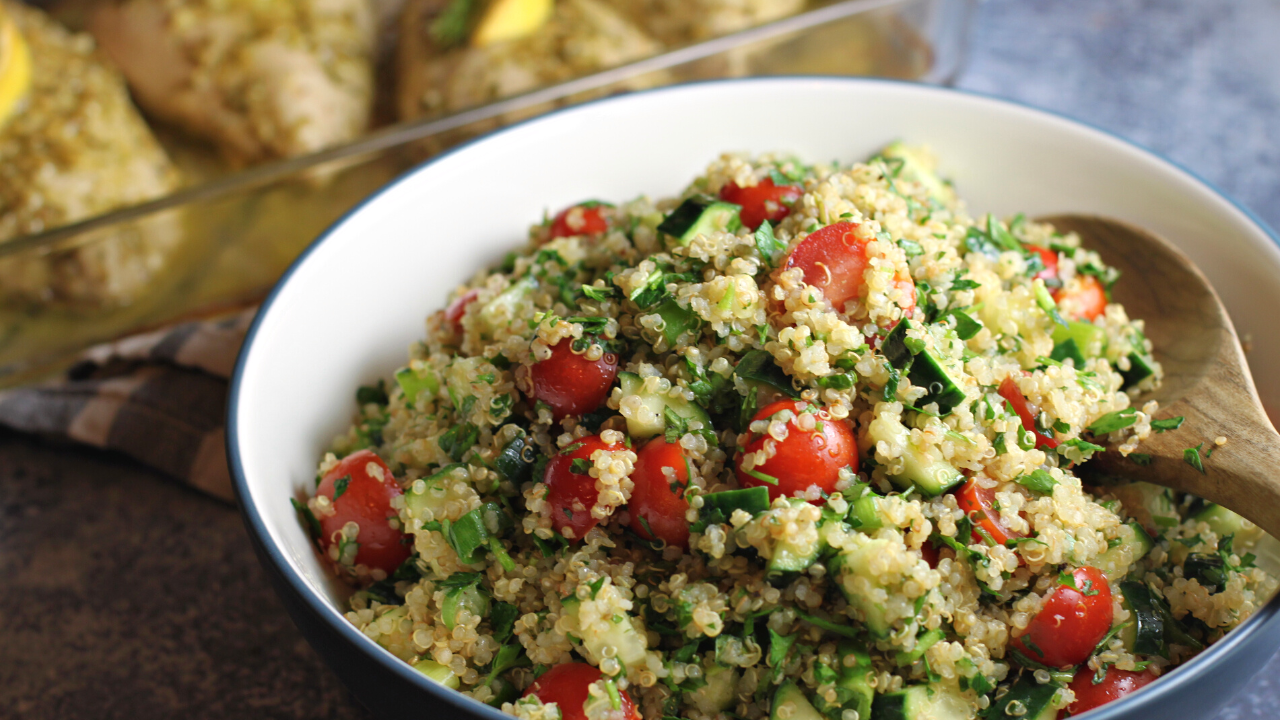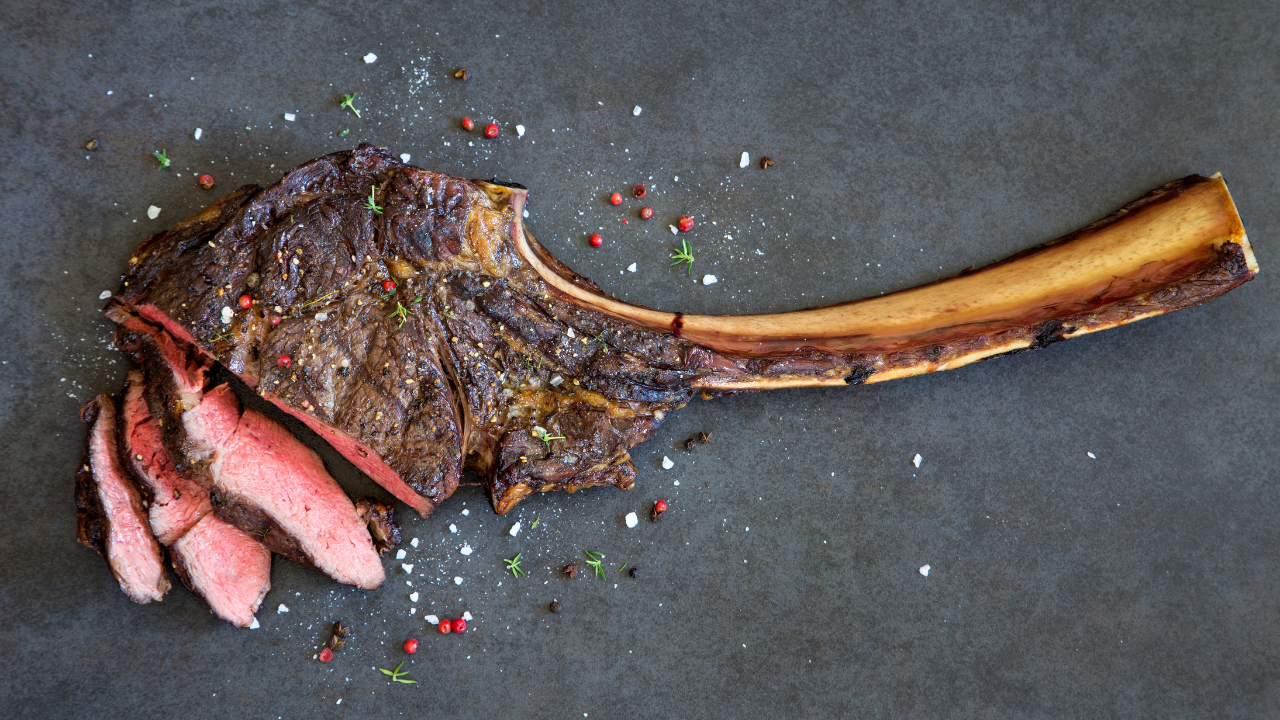Lemon Dill Chicken

This quick and easy Lemon Dill Chicken is light, lovely, and oh-so-versatile. Boneless, skinless chicken breasts take a flavor bath in lots of garlic, lemon, olive oil, fresh dill, and just a touch of coriander to keep it interesting. To keep it extra simple, you can even mix, marinate, and bake the chicken breasts all in the same pan.
What I love about this staple dish is that there are so many ways to work it. It works in the oven, it works on the stovetop, or, my personal favorite, it works on the grill. The recipe in this post uses breasts that are baked in the oven, but you could also substitute bone-in chicken breasts or whatever cuts of chicken you prefer or have on hand. You can also cook it up however you like and then do whatever you like with it! I've included instructions for other cooking methods and many serving suggestions below.
This Lemon Dill Chicken happens to be gluten-free, dairy-free, Paleo, AIP, and Low-carb. See! SO versatile, even in terms of dietary restrictions.
Full disclosure: Some of the links in this post may be affiliate links. As an Amazon Associate, I earn from qualifying purchases. Purchasing a product using one of these links will support my work at no additional cost to you. Please know that I only recommend products I wholeheartedly stand by.
13 Ways to Serve this Lemon Dill Chicken
This classic combo of fresh lemon, fresh dill, and plenty of garlic makes a winner chicken dinner, but once it's cooked up, there are endless ways to enjoy it.
- Serve it as a main event, as outlined in the recipe.
- Cube it before marinating, and then thread it onto skewers and grill it.
- Butterfly the boneless breasts for thinner cutlets and more flavor per square inch.
- Sear it in a hot skillet, marinade included.
- Slice up the cooked chicken and use it to top a salad.
- Put it on a buddha bowl with quinoa, veggies, and maybe some chickpeas.
- Stuff it in a romaine wrap.
- Make a double batch and freeze half of the breasts for a day when you need a quick and easy main course.
- Shred the cooked chicken and toss it with those succulent and flavorful pan juices to coat it with all that flavor and moisture.
- Put it in a gluten-free tortilla with a few avocado slices.
- Put it on top of cauliflower rice and served with a steamed green veggie like asparagus.
- Chop it up and put it into a soup pot with chicken broth and veggies for a lovely lemon chicken soup.
- I created this recipe to pair with this Quinoa Tabbouleh, a bright and herbaceous combo for spring and summer meals. Of all the ways to use it, that pairing may be number one.

This recipe was made to pair with this delicious Quinoa Tabbouleh.
3 Ways to Cook This Lemon Dill Chicken
In addition to the many ways to use this Lemon Dill Chicken, there are also many ways to cook it! That’s what makes this recipe so versatile. If it's too hot to fire up the oven, grill it! If the weather cancels your grilling plans, sear it in a skillet on the stovetop.
Here are the basic instructions for each cooking method:
- Grilling: The grill adds a wonderful smoky flavor and crispy bits to contrast the bright, fresh flavors of this Lemon Dill Chicken. There are a couple of ways you can cook this on the grill. Cut the chicken into 1-inch cubes before marinating, and then skewer them with veggies like onion, mushrooms, or zucchini. Alternately, you can butterfly the breasts, cutting each breast half into two thinner cutlets before marinating. These cutlets maximize the marinade-to-surface area of the chicken and, therefore, the flavor. They also cook up quickly and slice into easy bite-sized pieces to top your salad, rice, or Buddha bowl.
- Stovetop: For the stovetop method, I recommend leaving the breasts whole to avoid overcrowding the pan. This will help ensure a nice golden brown crust on the outside and juicy chicken breast meat on the inside. Use a wide, heavy-bottomed skillet, and pre-heat it over medium-high heat before adding the chicken breasts. Let them sizzle, undisturbed, until they are a rich golden brown on the bottom before flipping and repeating on the other side. If the bottom of the pan (or the chicken) is getting too dark, reduce the heat. After both sides of the chicken are nicely browned, you can deglaze the pan with chicken broth or white wine to create a yummy pan sauce.
- Oven: This is the cooking method outlined in the recipe below. In colder months, an oven is a great option for this Lemon Dill Chicken because you can marinate and bake the chicken in the same dish while also warming up the kitchen. When oven-baking this Lemon Dill Chicken, I like to top each breast with a slice of lemon, which caramelizes just a little during cooking and tastes divine when the warm juice is squeezed atop the chicken. Simply pop the chicken into a 425 F oven for about 25 minutes or until the internal temperature of the biggest breast reaches 160 F. Let it rest for at least 5 minutes once pulled from the oven to allow the chicken to finish cooking and also to help retain those succulent juices. Those juices are one of the best parts about the oven method of cooking this chicken, as they collect in the pan and are divine drizzled over the chicken and whatever starchy sides or steamed veggies you decide to serve it with.

The Secret to Perfectly Cooked Chicken Breasts
Unlike steaks or certain types of fish, chicken needs to be fully cooked to consume it safely. But here's the catch: Overcooked chicken is dry, especially white meat chicken with no bone or connective tissue to add back to the meat what cooking takes out of it. The key to perfectly cooked, moist, and juicy chicken breasts is to cook them to the exact degree of doneness required, not more, not less. That perfect degree of doneness is where the meat is cooked all the way through but still moist and juicy inside.
Well, how do you do that, and how do know when the chicken has reached that perfect degree of doneness? You can cut into it, but that will let all the juices seep out and ruin your presentation. You can cook it to death, but you'll end up with dreadfully dry chicken breasts. You can use the touch test, where you gauge the doneness of the meat based on how firm it is when poked (firmer means more done, and softer means more rare). The touch test is a good place to start, but it doesn't provide the accuracy required to consume chicken safely.
Okay, so what then?!
I'll tell you. The secret to perfectly cooked chicken breasts (or any other animal protein) requires a small but essential kitchen tool...
Take the internal temperature of the chicken using an instant-read thermometer. This small probe can tell you exactly how hot the chicken is in the deepest part of the breast in just a few seconds. That's why they call it an "instant read," and no kitchen is complete without one.
Here's my favorite instant-read thermometer and the one we use at home.
Another important instruction: Don't crowd the chicken breasts in your pan or baking dish. To ensure even cooking, make sure that the heat can circulate between each breast. Piling them up can lead to uneven cooking, and nobody likes rare spots in their chicken breasts. That means if you do a double-batch, you'll need a bigger baking dish.
So, first, don't crowd the chicken. Once cooked, remove the chicken breasts from the heat when the center of the thickest part of the breast registers 160 F. At this point, you want to leave the chicken in the pan or roasting dish or loosely covered with foil if grilled and let it rest for at least 5 minutes. During this residual cooking time, the internal temp of the breasts should rise to about 165 F, which is the USDA recommendation for chicken. This resting time also gives those internal juices a chance to slow down and settle into the fibers of the meat, making for wonderfully juicy and perfectly cooked chicken breasts.

Thyroid Healthy Recipe Highlights:
- Chicken is a very good source of selenium, which helps to regulate the production of thyroid hormone, convert T4 to T3, and protect the thyroid from stress. A 3-ounce serving of chicken also provides 84% RDI of the essential amino acid Tyrosine, which the thyroid gland combines with iodine to produce thyroid hormone.
- Garlic has many powerful healing properties, which can aid or alleviate some of the symptoms of thyroid conditions, such as inflammation, cardiovascular issues, decreased immunity, and increased infection. It can also support the liver in its detoxification efforts.
- Lemons are a very good source of vitamin C, with one ounce providing 36% DV. A study recently shared in the Journal of Clinical Endocrinology and Metabolism stated, “In patients with hypothyroidism and gastrointestinal pathology, vitamin C improves the abnormalities in serum free T4, T3, and TSH concentrations.”
- Extra Virgin Olive Oil is considered one of the world’s healthiest fats. Some of its many scientifically-proven health benefits include anti-inflammatory properties, high antioxidants, and reduced risk of cancer, Alzheimer’s, and heart disease.
Happy cooking, happy thriving, and enjoy the recipe (below)!

P.S. Need more thyroid-friendly recipe inspiration? I’ve got you covered. My Thyroid-friendly Everyday eCookbook features over 50 quick and easy, thyroid-friendly recipes your whole family will love. To take a peek at what’s inside, CLICK HERE.
Suggested Accompaniments:
- Quinoa Tabbouleh
- Toasted Quinoa
- Cauliflower or Basmati Rice
- Olive Oil Mashed Cauliflower and Sweet Potatoes
- Simply Perfect Wild Rice
- Herb Roasted (or Grilled) Asparagus
- Zucchini Pappardelle with Mushrooms
- Parsnip Sage Risotto
Subscribe to my free newsletter for fresh recipes & lifestyle tips, delivered weekly, and receive a free gift!
By submitting this form, you agree to receive ongoing updates from Hypothyroid Chef










